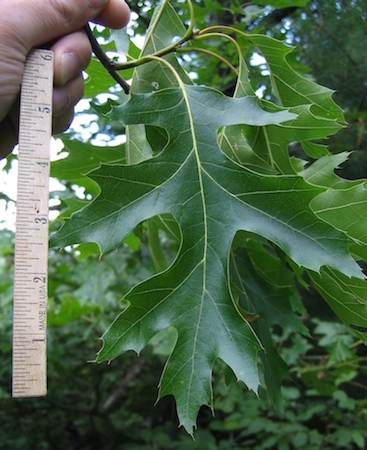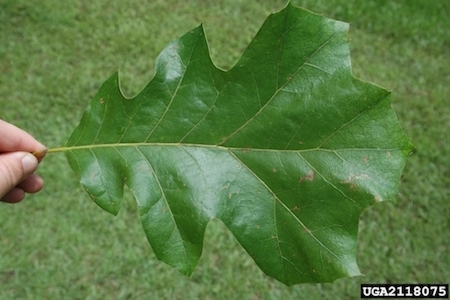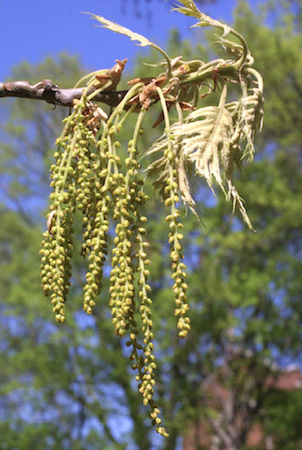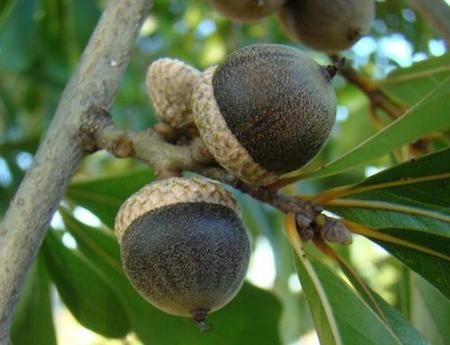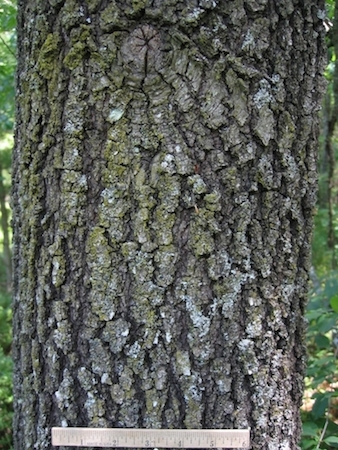Black Oak
Specifications
- Latin (scientific) name: Quercus velutina. Velutina is Latin for velvety, referring to the young leaves.
- Life expectancy: 350 years
- Height: 126 feet
- Circumference: 12 feet
-
The height and circumference measurements listed above are for the largest-known black oak in the Atlanta area. This tree is located at the 6 Springs Wetlands in Piedmont Park.
-
Special characteristics:
Black oaks are very stable trees. Their bark has noticeable stripes coming down the trunk, which make make the tree look taller than it is. Your eyes seem to drift upwards to find where they stop, which is in the deeply shaded canopy. The leaves are huge, in fact the biggest of the oaks in the southern United States. Catch a breezy day in autumn and it's almost like watching frisbees from heaven: falling black oak leaves take forever to touch the ground.
-
Annoyance factors:
Acorns are bomber in size, up to ¾ inch in diameter, and they sure do hurt when one hits you! Parking under this tree while these acorns are dropping will take your car straight to the body shop.
-
Fun Facts:
If you collect black oak leaves in the Fall, you will know where in the tree they came from. How? This tree has two sizes of leaves. The lower "shade" leaves are big because they need more leaf surface to collect sunlight. The higher leaves are smaller because they require less surface space to absorb sunlight. At the same time, the higher leaves are also part of this tree's strategy for conserving water: they are smaller so they don't "breathe" as much water into the atmosphere.
-
Photo Credits:
Bark: Keith Kanoti, Maine Forest Service, Bugwood.org
Leaf (Sun): Keith Kanoti, Maine Forest Service, Bugwood.org
Leaf (Shade): Chris Evans, Illinois Wildlife Action Plan, Bugwood.org
Acorns: Paul Wray, Iowa State University, Bugwood.org
Flowers: Steven J. Baskauf, Vanderbilt University Bioimages

